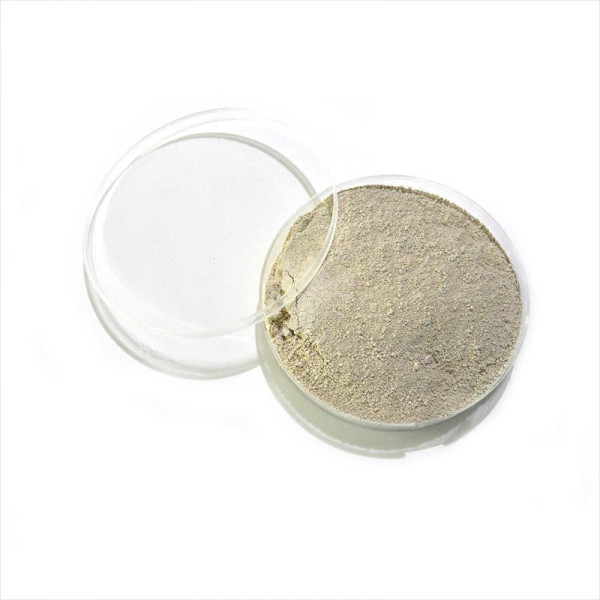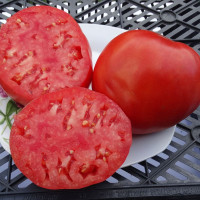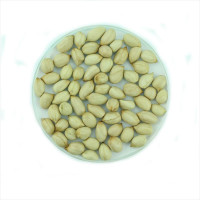Dolomite flour (soil deacidifier, acidity neutralizer) - dolomite is the best limestone fertilizer for reducing excessive soil acidity and increasing soil fertility.
Dolomite is a product made from dolomitic limestone (a natural mineral) by grinding it into flour.
Total carbonate content (CaCO3 + MgCO3) – 80%. The proportion of CaO in soil conditioners is 32%, MgO – 21%, with a CaO: MgO ratio of 1.53, indicating magnesium enrichment of the soil conditioner.
Additionally, dolomite flour contains microelements: copper – up to 55 mg/kg, zinc – up to 100 mg/kg, manganese – up to 70 mg/kg.
Need for dolomite
About 10 million hectares, or nearly one-third of Ukraine's arable land, have acidic soil solutions, caused by the displacement of calcium and magnesium from the soil’s adsorption complex by hydrogen or aluminum ions, which determine soil acidity levels.
The concentration of H+ ions is denoted by the pH symbol (negative logarithm of H+ ion concentration in grams per liter of solution). Soil solution pH ranges from highly acidic to neutral.
Soil acidity levels and the need for liming
- Strongly acidic (3.0–4.0 pH) – application rate: 0.60–1 kg/m²
- Acidic (4.0–5.0 pH) – application rate: 0.4–0.6 kg/m²
- Slightly acidic (5.1–6.0 pH) – application rate: 0.1–0.4 kg/m²
The highest demand for dolomite application is in the Polissya and Forest-Steppe regions, as well as under forested areas in other soil-climatic zones of Ukraine. Liming is necessary for sod-podzolic soils, gray forest soils, dark gray podzolized soils, and podzolized chernozems. In soils with acidic reactions, crop yields decrease by nearly half, and the efficiency of mineral fertilizers applied is 1.5 times lower compared to limed soils.
Benefits
- Increases agricultural crop fertility by 1.5-2 times or more compared to untreated soils.
- Enriches soil with calcium, which promotes plant growth and improves root systems.
- Provides magnesium, essential for chlorophyll synthesis and photosynthesis.
- Improves nutrient uptake from applied mineral fertilizers by 30-50%.
- Enhances crop quality.
- Increases plant resistance to diseases.
- Improves physical, physicochemical, and biological soil properties.
- Boosts assimilable nitrogen, phosphorus, potassium, and molybdenum levels in the soil.
- Enhances organic and mineral fertilizer effectiveness.
- Improves plant nutrition conditions.
- Increases crop preservation and quality.
- Binds radionuclides, contributing to environmentally clean harvests.
- Effectively combats insects—finely ground dolomite causes abrasive destruction of chitinous exoskeletons, especially in jointed areas.
- High economic efficiency.
- Soil application of Dolomite-Impex leads to simple or extended fertility restoration, increases biological activity, enhances nitrogen uptake, improves aeration, soil structure formation, looseness, and water permeability, making soil easier to cultivate.
Physiological role of magnesium
Magnesium is one of the most important mineral nutrients for plants. It is part of the chlorophyll molecule and plays a key role in photosynthesis. It also accumulates directly in seeds, providing energy for germination. In growing plants, magnesium is transported from older leaves to younger ones and reproductive organs.
A magnesium deficiency negatively affects grain, tuber, and root crop formation and yield. The highest magnesium uptake is observed in potatoes, beets, legumes, and fodder crops. Magnesium promotes strong root system development and optimizes mineral nutrition.
When magnesium is deficient, oxidation reactions intensify, sugar and ascorbic acid levels drop, and chlorophyll concentration in leaves noticeably decreases. Lower leaves become mottled or "marbled," with pale areas between veins while veins remain green, signaling partial chlorosis. Leaves eventually yellow, curl at the edges, and prematurely fall off, slowing plant growth and reducing yields.
Soil is considered favorable for agricultural crops when the soil solution pH reaches 5.5. Depending on soil acidity and texture, dolomite doses range from 3.0 to 7.0 tons per hectare.
The exact amount of soil conditioner is calculated based on hydrolytic acidity using the formula:
CaCO3 dose = Hg · 1.5 · K,
where Hg is hydrolytic acidity, 1.5 is the conversion factor, and K is the limestone material conversion coefficient.
Acidic soils can be visually identified by characteristic weeds—sorrel, sedge, meadow grass, rush, heather, and field horsetail. However, the best way to determine lime application rates is through physicochemical analysis.
Efficiency of "Dolomite-Impex" application
Calculated doses of soil conditioner for reducing acidity to slightly acidic reaction increase agricultural crop yields as follows:
- Spring cereals and winter rye – up to 0.5 t/ha
- Winter wheat – up to 0.6 t/ha
- Table beets, cabbage, and sugar beets – up to 8.0 t/ha
- Potatoes – up to 5.0 t/ha
- Clover hay – up to 3.0 t/ha
- Corn grain – up to 1.0 t/ha
Full hydrolytic acidity liming is performed once every 2-5 years. The total yield increase over the soil conditioner’s duration of action is about 0.8 t/ha.
Liming to neutralize acidity from mineral fertilizers
In modern agriculture, combining dolomite with mineral fertilizers is essential for neutralizing potential acidity. Large farms apply 1.2 tons of dolomite flour per ton of ammonium sulfate, 0.75 tons per ton of ammonium nitrate, 0.8 tons per ton of urea, 0.1 tons per ton of superphosphate, and 0.15 tons per ton of potassium chloride.
For home gardens, corresponding doses per 1 kg of mineral fertilizers are: 1.2 kg, 0.75 kg, 0.8 kg, 0.1 kg, and 1.15 kg.
Sensitivity of agricultural crops to soil conditioner and its application
Dolomite-Impex can be applied in open soil and protected conditions (greenhouses, tunnels). It is used during primary soil treatment (plowing, cultivation, bed preparation), applied in rows or planting holes to neutralize chemically and physiologically acidic fertilizers.
Lawn care: Dolomite flour stimulates grass growth and density. Soil application is recommended in autumn and spring to improve lawn health. Proper balanced spring fertilization enhances drought resistance, environmental resilience, and weed suppression, resulting in thicker, more evenly distributed turf.
Vegetable crops: Dolomite should be added before planting cabbage (white and cauliflower), table beets, lettuce, spinach, and celery. Radish, zucchini, and sorrel tolerate soil acidity better.
Tomatoes require slightly acidic or near-neutral soil (pH = 5.5-6.5) for optimal growth. Dolomite-Impex should be applied before planting tomatoes, cabbage, potatoes, and eggplants at 0.35-0.70 kg/m².
Cucumbers do not tolerate acidic soils—dolomite should be applied to the preceding crop.
Fruit crops react positively to chemical soil conditioning, significantly increasing yields in apple, cherry, plum, blackcurrant, grape, peach, and other fruit-bearing plants.
For stone fruit trees (cherry, plum, apricot): 1-2 kg per tree annually on the root zone after harvest.
For blackcurrant: 0.5-1 kg per bush every 2 years. For flowers: 5-10 g per liter of soil.
Field crops: Sugar beet, alfalfa, clover, and white sweet clover benefit from dolomite application in acidic soils (pH = 6.5-7.5, neutral reaction). Dolomite is most effective for winter cereals, potatoes, and flax.
Without regular soil liming, long-term acidic soil treatment is required to ensure stable, high yields. Acidic soil reclamation is economically viable and beneficial, as lime applications sustain optimal soil physicochemical conditions for years. Among limestone materials, dolomite flour is a key calcium and magnesium source, critical for soil fertility, regardless of land ownership.
There are no reviews for this product, be the first to leave your review.

No questions about this product, be the first and ask your question.

- Best prices on the market thanks to own production
- Only original germinating seeds









